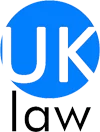How Do You Prove Fault In A Slip And Fall Accident And When Could I Make A Claim?
By Cat Reeves. Last Updated 12th March 2024. Welcome to our guide, looking at how to prove fault in a slip and fall accident. Proving fault in a slip and fall injury is very important if you want your personal injury claim to be successful. This guide aims to provide you with information on demonstrating liability for a slip or fall accident.
A slip, trip or fall may seem like a relatively minor accident, and you may not expect to come away from an accident like this with severe injuries. However, these kinds of accidents can cause serious implications.
If you have any questions about proving fault following a slip and fall injury, then get in touch with us. Our advisors are standing by to answer your questions and offer advice. The more information we have regarding your circumstances, the more accurately we will be able to value your potential claim.
If your claim is deemed valid, we may be able to connect you with a personal injury lawyer from our panel. They may be able to help you pursue your claim on a No Win No Fee basis.
Get In Touch With Our Team
There are a number of ways that you can reach us. We’ve listed the main ones below.
- Call us on 020 3870 4868
- Use the live chat function in the bottom right corner
- Use our online form to see if you have a claim
Services And Information
- How Do You Prove Fault In A Slip And Fall Accident?
- When Could You Claim For A Slip And Fall?
- How Long After A Slip And Fall Accident Could I Claim?
- What Are The Main Causes Of Slip And Fall Accidents?
- Slip And Fall Accident Compensation Calculator
- Claim For A Slip And Fall Accident On A No Win No Fee Basis
- Related And Similar Guides On How To Prove Fault In A Slip And Fall Claim
How Do You Prove Fault In A Slip And Fall Accident?
A large part of the process when trying to prove fault in a slip and fall accident is to gather plenty of relevant evidence. You need as much evidence as possible to improve your chances of success.
This evidence could include things like:
- Photographs – photographic evidence of what caused your injury (e.g. obstruction in walkways or unsafe stairs).
- CCTV footage – you have a legal right to request footage of yourself. In public places, your accident may have been captured on video.
- Witness details – anyone who witnessed you being injured can supply their contact details so that they can provide a statement at a later date.
- Medical evidence – medical reports, X-rays and prescription slips can all prove the extent of and recovery time of your injuries.
There are other forms of evidence, but these are some of the main ones. If you have any more queries regarding potentially relevant evidence, then reach out to us today. Our number can be found at the top and the bottom of this article.
When Could You Claim For A Slip And Fall?
A slip and fall can cause a variety of injuries, from minor bumps and bruises to major head trauma, and you might be wondering if you could claim compensation.
In order to form the basis of a valid personal injury claim, you need to be able to prove that negligence occurred. In personal injury law, negligence occurs when:
- You are owed a duty of care
- This duty is breached
- You are injured as a result
There are a lot of different situations in which you could be owed a duty of care. For example:
- At work: While working, your employer owes you a duty of care, which means they need to take all reasonably practicable steps to keep you safe. This is dictated by the Health and Safety at Work etc. Act 1974 (HASAWA)
- In public: While in a public place, the person in control of that space owes you a duty of care, which means they need to ensure your reasonable safety. This is outlined under the Occupiers’ Liability Act 1957.
To learn more about when you could potentially claim for a slip and fall, contact our team of advisors today. Or, keep reading for more information.
How Long After A Slip And Fall Accident Could I Claim?
The Limitation Act 1980 states that you generally have 3 years to start a personal injury claim. This either runs from the date of the accident or the date that you became aware that your injuries were caused by negligence (the “date of knowledge”.
However, in some circumstances, you could still make a claim after this time window has expired. We’ve listed some examples below.
Children cannot make a personal injury claim for themselves. Their 3-year time limit is suspended until their 18th birthday. If they wish to make a claim before then, they must act through a litigation friend. This is an adult who claims on behalf of the child.
If someone lacks the mental capacity to make a claim, the time limit is suspended unless they recover. If they do recover, they have 3 years to start their own claim. A litigation friend can also claim on their behalf while they lack the mental capacity to claim.
These time limits and the exceptions that apply can be complex. If you’re not sure of your time limit to make a No Win No Fee claim, then contact us today, and we can let you know.
What Are The Main Causes Of Slip And Fall Accidents?
Both slips and trips can cause a person to fall. Proving liability is vital if you want to make a successful personal injury claim. So, it’s important to have a good understanding of the duty of care towards you and what negligence is defined as.
- Wet floors – this could be caused by cleaners, spillages, or even rainwater being tracked in due to foot traffic.
- Slippery floors – even in dry conditions, some surfaces such as glossy tiles could become a slip hazard. This could happen if the wrong cleaning products were used on the surface, for example.
- Dusty floors – dust can also reduce the grip of what would otherwise be a safe walking surface.
- Obstacles/obstructions – leaving items where people walk can cause trips. Even essential work equipment must be properly stored. Debris like cardboard boxes or bottles could also cause someone to trip.
- Loose/uneven flooring – unsafe flooring conditions must be fixed as soon as possible. This goes for all settings, from pavements to staircases.
- Trailing cables – many workplaces use appliances that run on electricity. Wires must be secured to avoid trips and falls.
If you know who was at fault for your injury but need some help on how to prove fault in a slip and fall accident, get in touch with us today. Our advisors are ready and waiting to help you. The advice is free, and you may be able to claim on a No Win No Fee basis.
Slip And Fall Accident Compensation Calculator
Compensation payments can be made up of two main figures. These figures are called general damages and special damages. General damages are awarded to the claimant to address the pain and suffering caused by the injuries sustained in a slip and fall accident.
A publication called the Judicial College Guidelines can be used to help calculate general damages. This is an extensive list of what certain injuries of varying severity could be worth in compensation. These guidelines are updated semi-regularly, with the last review taking place in 2019.
We’ve included a table below to give some examples of what could be awarded, using figures from the latest edition of the JCG, aside from the first entry.
| Injury | Details | Amount |
|---|---|---|
| Multiple Serious Injuries And Special Damages | Combined financial losses, like lost earnings, and multiple serious injuries. | Up to £200,000+ |
| Brain Damage | Moderate (iii) - Where there's an affect on concentration and memory, there's a reduced ability to work and a small risk of epilepsy. There will be a limited dependence on others. | £43,060 to £90,720 |
| Brain Damage | Less severe - A good recovery will have been made and the injured person will be able to start work again and have a normal social life. However, they may be left with some memory problems and disinhibition of mood. | £15,320 to £43,060 |
| Chest | Rib fractures or soft tissue injuries that cause disability and pain for some weeks. | Up to £3,950 |
| Neck | Minor (i) - Where the injured person makes a full recovery from injuries such as minor soft tissue injuries within one to two years | In the region of £148,330 |
| Back | Severe (iii)- Where a back injury leads to chronic conditions where disabilities such as severe pain and impaired sexual function remain. | £38,780 to £69,730 |
| Back | Minor (i)- This bracket includes injuries that recover fully or to nuisance level without surgery within about two to five years. | £7,890 to £12,510 |
| Shoulder | Serious- Where the shoulder is dislocated and the lower part of the brachial plexus is damages, resulting in shoulder pain and restricted shoulder movement. | £12,770 to £19,200 |
| Clavicle | Where the clavicle is fractured. The amount of compensation awarded will depend on how bad the fracture was and whether the effects are permanent or temporary. | £5,150 to £12,240 |
| Pelvis and Hips | Severe (iii): Injuries in this bracket include fractures that necessitate a hip replacement. | £39,170 to £52,500 |
Special Damages
If you can prove fault in a slip and fall accident, then you could also be entitled to special damages. Special damages are paid to the claimant to cover any financial losses or additional outgoings that occur due to their injuries.
Some examples of special damages could include:
- Loss of earnings – an injury may cause you to take time off work, so special damages can reimburse you for lost wages you would have earned during this period. If your injuries stop you from returning to work at all, then you may be able to claim future loss of earnings, too.
- Damage to property – an example of property damage could be if your phone screen was cracked because it was in your pocket as you fell. You could also claim for things like the cost of replacement clothes if yours were damaged.
- Medical costs – you may have to pay for prescription medication or receive treatment not covered by the NHS. If so, you could receive the cost of this back.
It’s very important to maintain records of these financial losses, or you may not be able to reclaim them. You could support your claim for general damages with things like invoices, receipts or payslips.
Claim For A Slip And Fall Accident On A No Win No Fee Basis
A No Win No Fee personal injury solicitor means that you won’t need to pay your solicitor if your case is unsuccessful. You also won’t need to make any upfront payments or pay them anything as they work on your claim under a Conditional Fee Agreement (CFA).
Following the conclusion of a winning case, they will take a legally capped success fee which will be a percentage of your compensation. This legal cap ensures that you always get the majority of the settlement you are awarded.
Our panel of lawyers have worked with many clients in the past under a No Win No Fee arrangement. To find out how we can help you to do the same, get in touch with us today. You can do so in one of the following ways:
- Call us on 020 3870 4868
- Use the live chat function in the bottom right corner
- Use our online form to see if you have a claim
Related And Similar Guides On How To Prove Fault In A Slip And Fall Claim
We’ve also included some links to additional material regarding the subject of how to prove fault in a slip and fall accident.
- More information on what a litigation friend is.
- Government information on Statutory Sick Pay.
- Your legal right to request CCTV footage of yourself.
- How to claim for a slip, trip or fall on ice at work.
- Another of our guides regarding slips, trips and falls.
- What to do if you hurt yourself at work.
- Fell In A Pothole In A Yard Or Car Park – Personal Injury Claims
- How To Claim For An Accident At Work Caused By Oil
- What Could You Claim For A Workplace Carpet Accident?
- How To Make A Personal Injury Claim After A Slip And Fall Accident
Writer IB
Checked by NC








